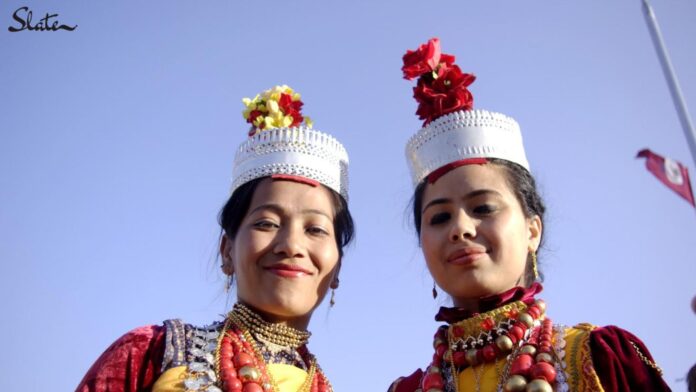By Tanisha Das
Meghalaya is a matrilineal society. In terms of ancestral descent, the kinship system is traced through the maternal instead of paternal line, unlike other parts of the world.
India is largely a patrilineal country, but this state of the North East differs.
The culture of Meghalaya brings to its people, a different lifestyle where lineage and inheritance are traced through women, with children being part of the mother’s kinship group and women are supposed to be respected in practice.
Unlike other cultures where women leave their natal homes right after marriage to live with in-laws, men shift to live with their wives post marriage in Meghalaya. Women do not require to change their surnames. Children also do not take up the surname of fathers; instead, carry the family name of their mothers.
Where inheritance is concerned, property is passed on to the daughters of the family, specifically, the youngest daughter among the Khasis, lovingly referred to as Ka Khadduh.
Traditionally, it is the birthright of the youngest daughters to inherit all the property in Meghalaya. Though rare, parents may also choose which daughter to pass on the inheritance to. In families with no daughters, they either give away or split their possessions for their sons.
Most women here strike a balance between working outside their homes and taking care of families – long before it became a norm in other parts of the country – one may argue that women, as a result of matriliny, is ahead of her times.
Widow remarriage is also encouraged in the Garo society. If a husband dies, one of the brothers or nephews of the deceased husband will be given to her by the mahari (or clan). Hence, the clan of the deceased husband is responsible for providing a new husband for the widowed wife. That said, if one chooses to remain widowed and does not wish to remarry, her choice is respected.
But is Meghalaya matriarchal as an extension of matriliny?
According to tradition, women have had an upper hand in marriage and inheritance. They held more importance in terms of possession of properties. At least, in theory! But, did they actually wield power in their households and in decision-making?
To answer this, one would need to reflect on the difference between matriliny and matriarchy.
The rest of India is not only patrilineal but patriarchal as well. Men are the “bread winners” – the providers, therefore, the head in most families. They have always enjoyed a higher position in their families and society as a whole.
Meghalaya, too, is not free from patriarchy, despite the fact that both men and women, for instance, have earlier worked in fields and provided for their families… something that remains in practice even now.
Given that women also look after the household, patriarchy exists, like the rest of India.
Here, the women with inheritance are considered powerful and honoured in family circles, but do they hold absolute authority or power regardless of their possessions?
In a Garo family, the daughters who inherit the property are often the head of the family. Yet, they do not have any higher authority/power. It is mostly the younger or the elder brothers of the mother that play a bigger role. In any important family decision, the last word is of the mama or the mother’s brother.
As Abigail (true identity withheld on request), a social activist, said, “In a Garo family, it’s the power of neither the man nor the woman, but mostly the uncles (mama). The families may be nuclear but the brothers of the mother have the sole power.”
Echoing her sentiments, Dolcy (true identity withheld on request), a school teacher added, “They don’t interfere in family matters. The brothers help when the family reaches out to them. Even though the women inherit all the wealth and the name, the power still lies with the men.”
Given that women are traditionally head of a village/clan, they are the nokmas, while their husbands are supposed to assist them but over the years things have changed. Women nokmas are still present, but their population has declined. In many cases, men (including the husbands) have taken over the decision-making powers. Women of Garo hills have raised their voices to make the authorities realise that the traditional practices and the position of a woman in Garo society has to be restored. Unfortunately, change is yet to be seen in this regard.
Women do not enjoy a superior status in the society irrespective of Meghalaya being a matrilineal state. The term is celebrated by people here and in other parts of the country once they know about matriliny, perhaps, confusing it with matriarchy.
Engaging with some men in Garo Hills further corroborated this – they have also witnessed that women do not have any authority – showing that the perception about matriliny as women wielding power is far from the reality. They also believe that while the matrilineal system empowers women in a way, yet women should enjoy actual authority than they actually do.
Meghalaya is matrilineal but evidently not matriarchal. With the talk around women representation in politics, much remains to be seen on how matriliny evolves towards a progressive, inclusive mindset.


